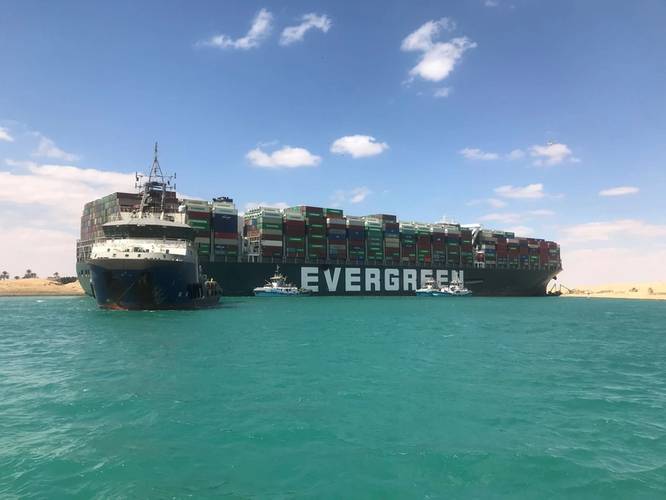Insurance Insights: Larger Vessels, Larger Exposures
The blocking of the Suez Canal by one of the largest container ships in service in the world – the Ever Given – in March 2021 caused huge delays to hundreds of vessels waiting to transit the canal, one of the biggest chokepoints on the critical East/West trade shipping route. The blockage was estimated to have affected an estimated $9.6bn of goods each day, or around 12% of total world trade.
The latest in a growing list of incidents involving large vessels, the Ever Given has added to concerns in the industry that the risks associated with large ships may soon outweifsgh the benefits.
The industry needs to look more closely at how to minimize the risks of mega-ships, especially in ports or in bottleneck passages like the Suez Canal or the Panama Canal, given the disruption we have seen that grounding incidents can cause. If a ship runs aground in one of these waterways, specialized tugs would be needed and the port and canals should have access to adequate resources in relatively short time.
Economies of Scale Alongside Greater Risks
Container ships, car carriers and bulk carriers have grown larger in recent decades as shipping companies seek economies of scale and fuel efficiency, a trend that is likely to continue with climate change and the introduction of greenhouse gas emissions reduction targets for the industry. Despite the Covid‑19 pandemic, ever larger vessels are on order. In December 2020, Ocean Network Express ordered six new container ships with capacity in excess of 24,000 TEU. The HMM Algeciras, introduced in April 2020, is currently considered to be the world’s largest container ship with capacity of just under 24,000 TEU.
While economies of scale have helped drive the trend for larger and larger vessels, insurers have been warning about the growing risks associated with larger vessels for years, including the problem of fires on large container ships. Insurers have already seen a number of very large claims from fires and groundings for large container ships as well as fire and stability issues for car carriers. Large ore carriers have also seen losses while the grounding of the cruise ship Costa Concordia remains one of the most expensive marine insurance losses in modern times at almost $2bn.
More recently, the industry is seeing the biggest spike in lost containers at sea in seven years. Large claims from container ship fires and groundings, as well as the loss of thousands of containers at sea, all have one common thread – the increasing size of vessels.
Unique risks for insurers
Very large vessels present some unique risks. In particular, responding to incidents is more complex and expensive. Port facilities and salvage equipment to handle large ships is specialized and limited, while salvage and wreck removal is more expensive and often still uncharted territory.
Port infrastructure has not kept pace with the increasing size of vessels. While approach channels to existing ports have been dredged deeper and berths and wharfs extended to accommodate ultra large vessels, the overall size of existing ports has remained the same. As a result, ‘a miss’ can turn into ‘a hit’ more often for the ultra large container vessels.
In the case of the Ever Given, had the vessel not been freed, salvage would have required the lengthy process of unloading some 18,000 containers, requiring specialist cranes. The wreck removal of the large car carrier, Golden Ray, which capsized outside the US port of Brunswick with more than 4,000 vehicles on it in 2019, has taken well over a year and cost insurers several hundreds of millions of dollars. The complex salvage operation, which has required the vessel to be cut into sections in situ, has been plagued by delays from Covid-19 infections, winter weather, fires and chain link failures.
Very large container ships and other large vessels are a volatile risk for insurers to underwrite and will increasingly require more and more input from risk consulting and claims. As exposures grow, insurers will have to ask if they are able to insure some types of large vessels, or if they can only be underwritten as part of a mixed fleet.
















